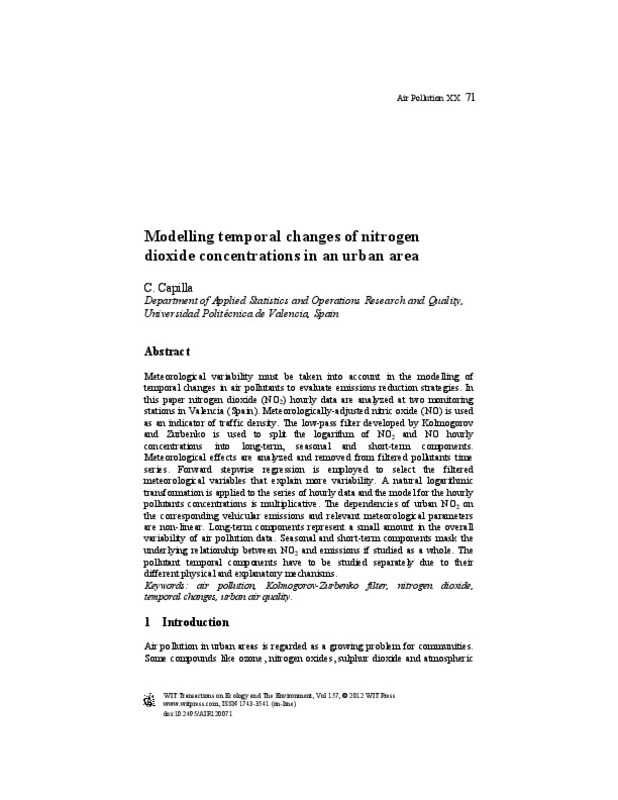JavaScript is disabled for your browser. Some features of this site may not work without it.
Buscar en RiuNet
Listar
Mi cuenta
Estadísticas
Ayuda RiuNet
Admin. UPV
Modelling Temporal Changes of Nitrogen Dioxide Concentrations in an Urban Area
Mostrar el registro completo del ítem
Capilla, C. (2012). Modelling Temporal Changes of Nitrogen Dioxide Concentrations in an Urban Area. En Air Pollution XX. Witpress. 71-79. doi:10.2495/AIR120071
Por favor, use este identificador para citar o enlazar este ítem: http://hdl.handle.net/10251/46198
Ficheros en el ítem
Metadatos del ítem
| Título: | Modelling Temporal Changes of Nitrogen Dioxide Concentrations in an Urban Area | |
| Autor: | ||
| Editor: | Longhurst, J.W.S. Brebbia, C.A. | |
| Entidad UPV: |
|
|
| Fecha difusión: |
|
|
| Resumen: |
Meteorological variability must be taken into account in the modelling of temporal changes in air pollutants to evaluate emissions reduction strategies. In this paper nitrogen dioxide (NO 2) hourly data are analyzed at two ...[+]
|
|
| Palabras clave: |
|
|
| Derechos de uso: | Reserva de todos los derechos | |
| ISBN: |
|
|
| Fuente: |
|
|
| DOI: |
|
|
| Editorial: |
|
|
| Versión del editor: | http://dx.doi.org/10.2495/AIR120071 | |
| Serie: |
|
|
| Tipo: |
|









